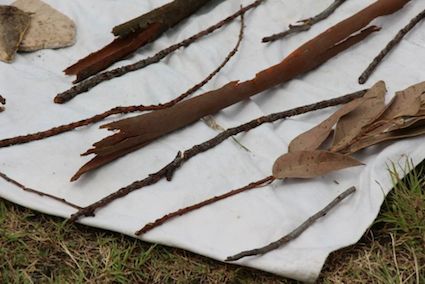
Schools in Scotland are shortly starting back after the summer holidays. Very often, teachers decide that “now is not the time” to be taking children outside, which is a pity as there’s lots of good reasons to be outside from the first day back:
1) The weather is great at this time of year. Even if it rains, it’s warm rain. If it’s windy, it’s a warm wind. So it’s a gentle acclimatisation for you and your class.
2) You can set the expectations outside as well as in. This means children learn that when they are outside during class time, it is still class time. You can ensure that there is consistency between the indoor and outdoor spaces.
3) By the time the colder months arrive, habits are embedded and the children know to bring the right clothing to wear outside or you have time to acquire some (NB Lost property is a good source).
4) There may be a number of jobs which need doing in your school grounds or outdoor space. For example, the class may need to harvest fruit and vegetables, set up routines for feeding hens, raised beds may need a good weed, etc. All these can be useful to remember and plan for now.
5) Dirty Teaching: A Beginner’s Guide to Learning Outdoors. There are lots of useful activities for getting going and can help build a collaborative learning environment within your class.
6) You can use the outdoor sessions to assess children’s understanding of key concepts. For example, in maths, I find the following activities useful:
- 20 Something Maths Pictures
- Fractions, decimals and percentages outside
- Making fraction walls from sticks
7) You can begin with an Outdoor Circle Time. This blog post has a few quick and easy ideas for setting the scene for the year ahead.
8) Set the class a challenge to get to know the school grounds in a different way: 10 Things You Need to Find Out .
9) The “What’s Changed?” Challenge
This is another simple starting-back activity. The children have to explore one part of the school grounds and see if they can find any changes which have happened over the holidays. At first, this may seem very obvious if there’s been building work. However, it’s the micro-changes which really help set the season. For example, has a spider moved a web? Has a tree lost some leaves? Have the dandelions bloomed and disappeared? Perhaps the goal posts have rusted a little more? This can be followed up with a reflective discussion or writing task about what changes have happened to children in their lives over the holidays which may provide some useful insights and make a refreshing alternative to “Tell me what you did in the summer holidays.”
10) One of my most popular blog posts is this one which uses playground markings to devise games relating to any theme.
11) Finally, take a moment to reflect in an outdoor sort of way on your teaching practice.
All the best, starting back. May you and your class have a wonderful year ahead.
This post was first published in August 2017.



















